I was up early the next morning and feasted on a breakfast of Buzz's scrambled eggs and Linda's blueberry muffins. As I motored off to resume my tour, I naturally had to stop at my Alma Mater, the College of Wooster, for a look around. This is Kauke Hall, where I studied Economics, Sociology, Art, and a few other topics that have been lost to time.

Wooster dates back to 1808 and has its own fair share of beautiful houses to rival those of other, more prominent places. This is the Liggett-Freedlander house, from 1880. Herman Freedlander built the department store in Wooster that carried his name and operated from 1884 to 1989. And if the house isn't sufficiently beautiful, take a look at the adjoining garden.


I detoured several miles from the
RoadRunner Magazine route to visit Perrysville, OH. It featured a muddy stream and a worthy Baptist church…


…and also the Perrysville Drive In, which offered a cluttered and eclectic menu and was even open early on this Saturday morning.

Behind the Drive In, I met this enticing young woman. She was charming and beautiful but didn't say much.

Perrysville is very much like a multitude of other small Ohio towns—with the notable exception of the following story: During the War of 1812, the British recruited many Indian tribes to help fight the American colonials. A detachment of the colonial army came through Perrysville and asked the town's minister, James Copus, to persuade the large Greentown Native American village to relocate temporarily, to put them out of reach of British influence. Rev. Copus reluctantly talked with the Indians, who were reluctant to move but trusted him enough to do so. Once Copus and the Indians were a few miles out of town, however, the Army ransacked their village and burned it to the ground.
The Greentown Indians were furious, naturally, and exacted revenge on several local families—including Rev. Copus, who was killed defending his family. His teenage daughter Sarah escaped through an opening in the roof and ran for help. In most versions of the story, she encountered the legendary Johnny Appleseed, who helped her reach safety and find a rescue party. At the dedication of the Copus Massacre Memorial, shown below, Sarah Copus Lambright was a spry 83-year-old and was grief-stricken by the memories of that day. A good (if somewhat "settler-centric") account of these events is available at
The Copus Massacre.
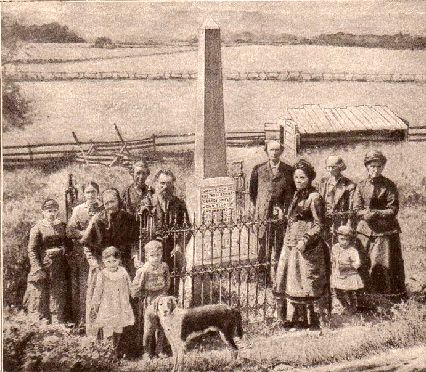
As for Johnny Appleseed (John Chapman), he visited the Perrysville area many times over years, became friends there with Roselia Rice (who went on to become a well-known writer and documented his adventures), fell in love with Perrysville's Nancy Tannehill, but was jilted and never considered marriage again. He lived past age 70 and is credited with establishing apple orchards and nurseries all over Pennsylvania, Indiana, and northern Ohio.
I returned to Loudonville, OH, scene of dwellings grand and small, plus a handsome Baptist church.



At Buzz's suggestion, I took Route 541 from Loudonville to Coshocton, and it proved to be exactly as he described it: An ideal road for motorcycling and sports cars. Similar to Highway 555, it was quite an enjoyable roller coaster. Along the way, I found an all-too-typical sight with Harley Davidsons lined up in front of a local bar (at 10:30 in the morning, no less)…

…a weathered old barn that is still standing strong…
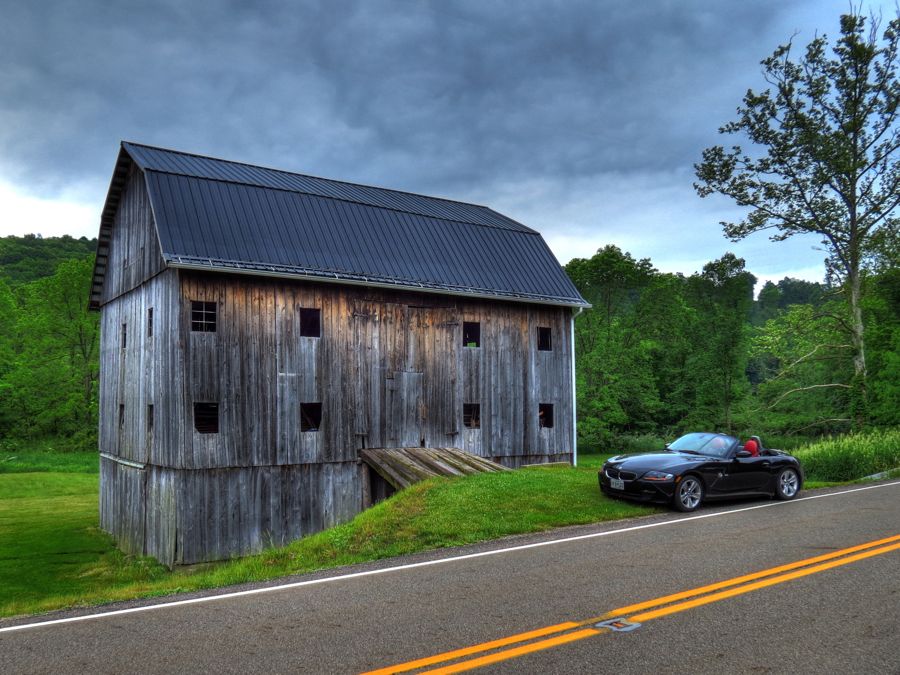
…and yet another Ohio ghost town, with sad testimony to the last family's rapid departure, leaving a child's toy truck behind.


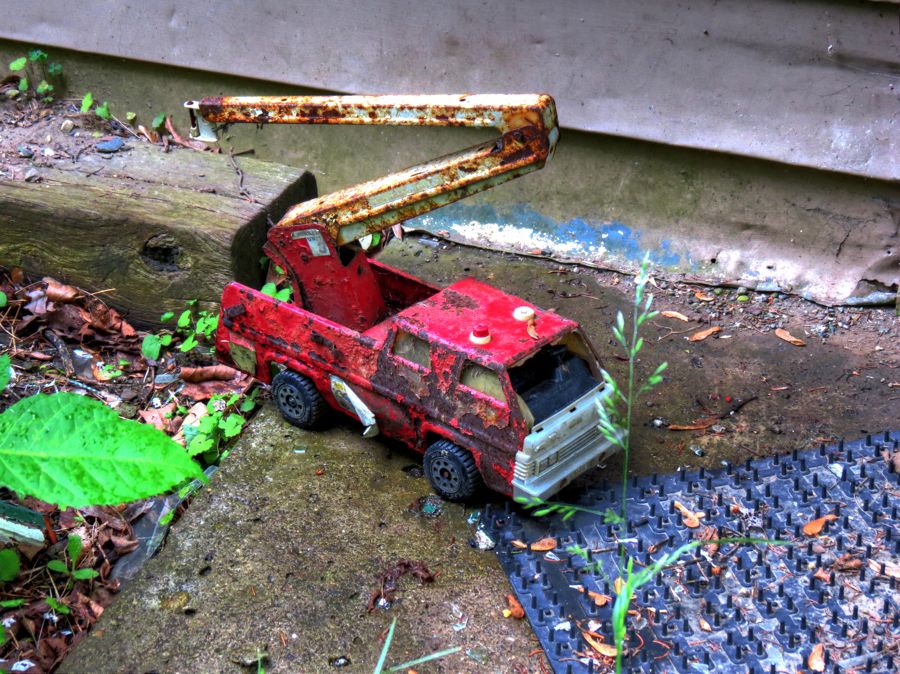
Other parts of Ohio were hard to explain. Why would someone want to mount a fairly rare Ford Ranchero on top of a welded set of steel pipes?

I stopped just outside of Blissfield to get a photo of all these cows vying for favored places in the shade of a single tree. Naturally I spotted a "covered bridge" sign and had to follow it.

The road led to one of Ohio's many "backyard oil wells," as I call them. This one wasn't operating on the day of my visit, but a lot of others were. These wells have been bolstering farmers' incomes for many decades.

The Helmick Covered Bridge was much longer—and much more original—than any of the others I'd seen on this trip. It stretches 166 feet over Killbuck Creek and was built in 1863.


Needless to say, I also found yet another Baptist church here!

As I drove past Blissfield, I spotted an interesting photo op out of the corner of my eye. A large brick building stood off to itself in the distance and appeared to be unused. Being completely unable to help myself, I doubled back and found the abandoned Blissfield School in the midst of a field.


Blissfield is still home to several families, although the population appears to be dwindling.

I bumped into Jennifer and a couple of her neighbors, who told me about the town. She grew up with her grandmother, who ran the post office from her framed-in front porch. Today, Jennifer lives in the same house and was pleased to show me the original letterbox that her grandmother used all those years. (Interestingly, Jennifer had visited Germany as a 16-year-old and had taken a tour of the BMW factory in Munich. She was startled to see the assembly line workers drinking beer on the job! They would toss their bottle caps to the tourists as souvenirs.)

Back in the day, this house served as a general store, gas station, and residence. I'm convinced that every place has a story behind it. Thanks, Jennifer, for filling me in on Blissfield's.

Roscoe Village, in Coshocton, OH, was once a thriving town on the Ohio and Erie Canal. The subsequent development of the railroads, together with the catastrophic flood of 1913, spelled doom for the village. The subsequent Great Depression finished off what few businesses were left, and by the 1970s vandalism and gang violence had become a serious problem for the residents. Thanks to the pioneering efforts of Edward and Frances Montgomery, however, Roscoe Village underwent a dramatic turnaround, with renovation of the historic buildings and many new shops, restaurants, and exhibits to attract tourists.

In this photo, the closest building housed a hotel, drug store, and hardware store.

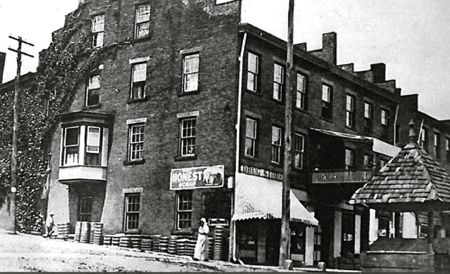
The village's sidewalks are still paved with bricks.

The blacksmith's shop was the hottest place in town, on what was already a hot day. But it was fun to talk with Jim and watch him turn an old railroad spike into an impressive knife.


The old toll-taker's house is now a museum. Anyone want to guess what this device is?

In the basement of the museum, I found an extraordinary collection of vintage children's toys. The owner, Rick, has been collecting for more than 50 years, and let me tell you: this guy really enjoys old toys. He happily demonstrated one after another, and it was quite a sight.



As I reluctantly moved on and drove through Cochocton itself, I had to stop at the scenic former firehouse.

And then I encountered yet another "car up on pipes." This one (an old Morris Minor, I believe) was at least being used to advertise an automotive junk yard.

I may need to start wearing blinders on these trips. Once again, the corner of my eye spotted something vaguely covered-bridge-like in the distance. It proved to be the Indian Camp bridge, from 1855. I tried wading through the deep foliage to get a stream-side photo, but halfway there I started worrying about Queen Snakes and Gulley Cats, so I gave up. At only 36 feet long, this was the shortest covered bridge I encountered. (Somewhere in Defiance, Ohio, there's a covered bridge that's only 9 feet long.)

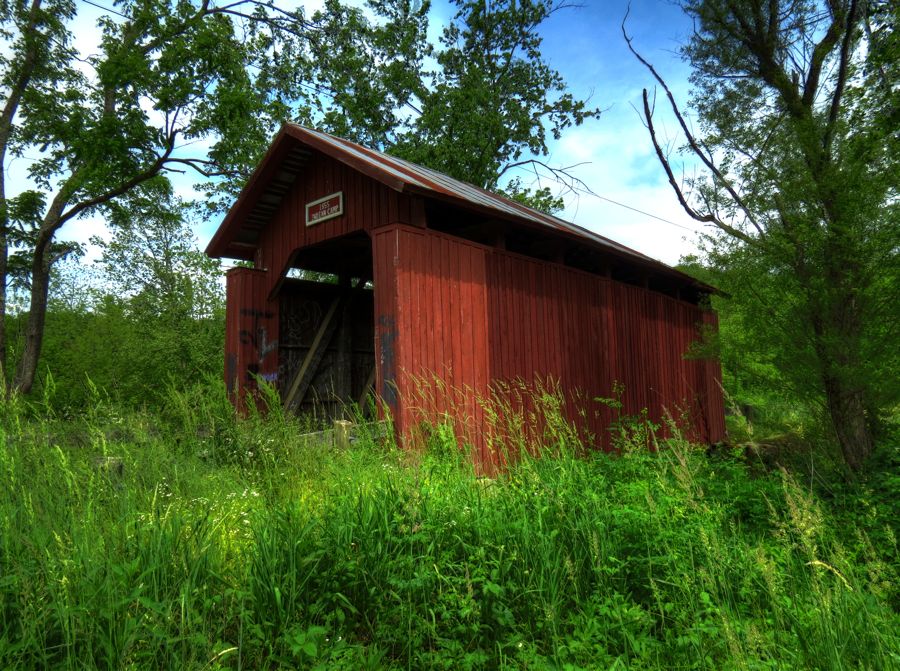
As best I can tell, this building used to be a school. Or a mill. Or possibly a church. Where's an historical marker when you need it?

Eventually, after 140 miles of touring and boy-racer fun, my path recrossed Interstate 70 and it was time to head back east to home. However, I couldn't resist a quick stop by my favorite almost-ghost town of Sewellsville. Here are two pairs of "before and after" photos, showing one of the houses and the old school from 2006 and my current trip. Another few years and that house will be gone altogether. But the school seems to be holding up well, even if it's getting progressively more hidden behind the vines.




With a quick pass through Hendrysville—birthplace of Hopalong Cassidy (actor William Boyd) in case you were wondering—it was back onto I-70 and a 5-hour jaunt back to Catonsville. I couldn't resist this multi-colored, multi-siding'd home. Sometimes it's best if they don't make them like they used to.

All told, my trip was 1,315 miles over three days. The Z4 was truly in its element on the twisting back roads of Ohio—and it graciously accepted the occasional puttering around dirt paths in search of the perfect photo. And if you've always thought that Ohio is flat, boring, and totally devoid of fun roads for driving, I challenge you to get out there soon and give 555, 93, 56, 39, and/or 541, a try. Better yet, get the
RoadRunner route and do the entire thing!
Rick F.